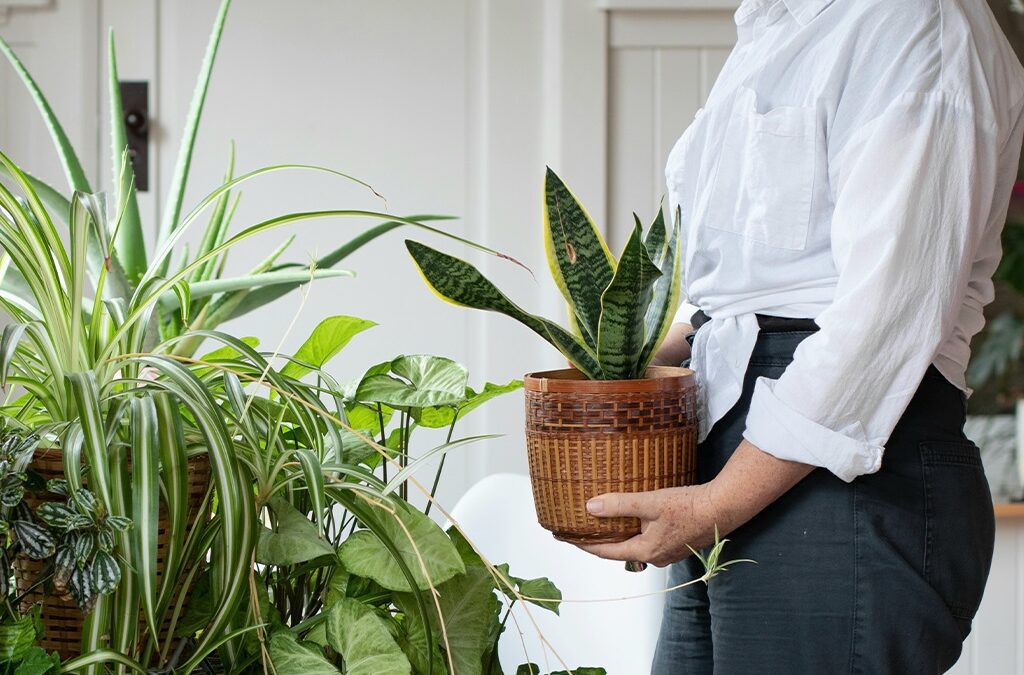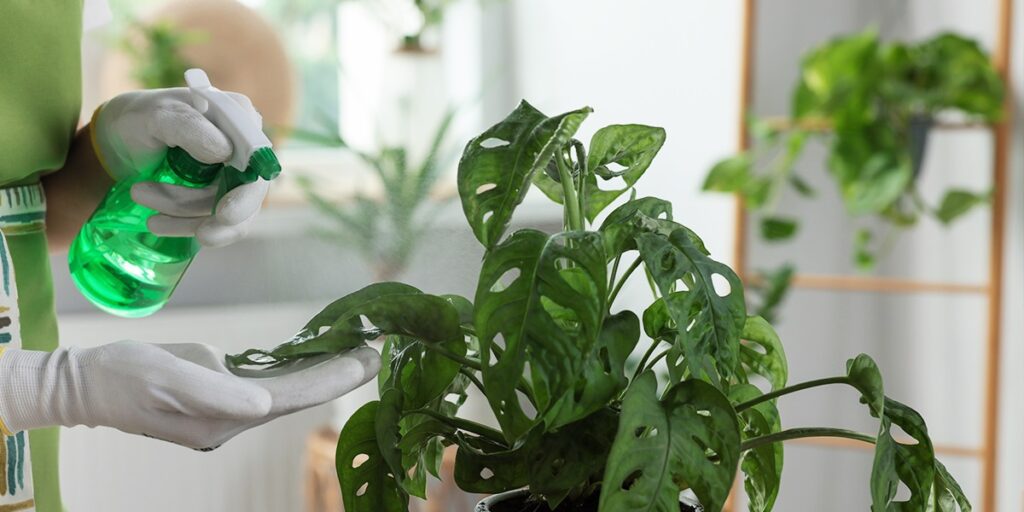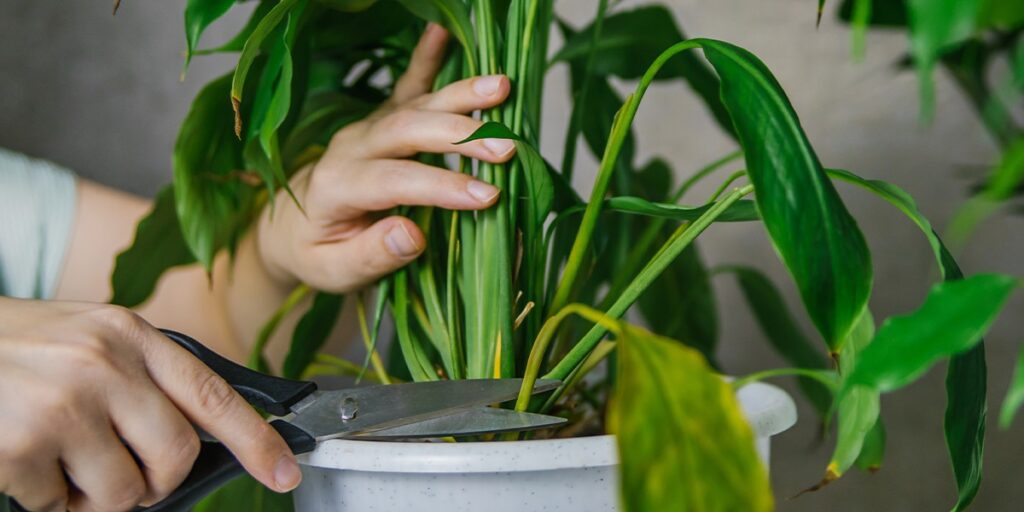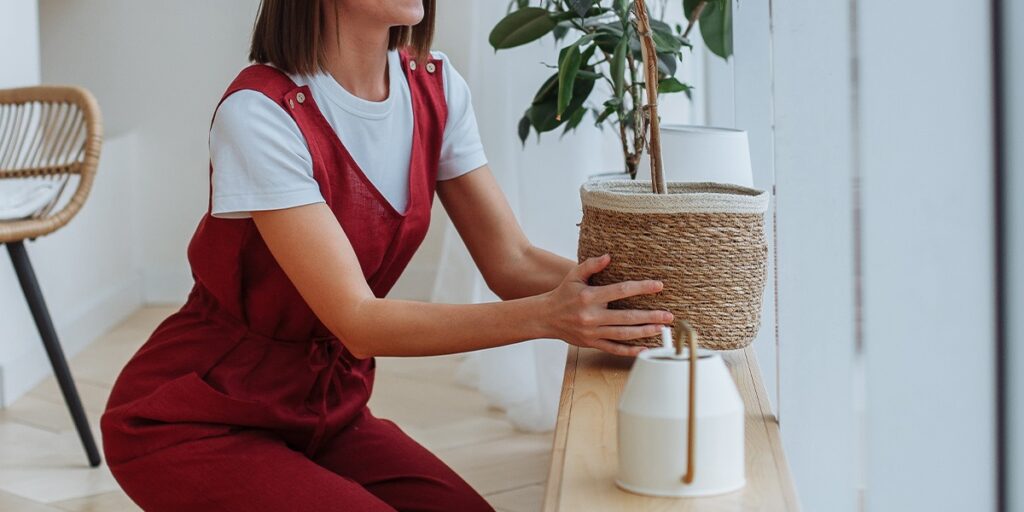There’s no need to end the gardening season with a tearful goodbye to your tender plants and tropicals! Extend their life by bringing them indoors before the frost arrives. Treat them like houseplants until the weather warms up again, and you can bring them back outside for another successful year. However, before you start hauling all your begonias inside, there are crucial steps you need to take to keep your plants healthy and safe.
Follow These Important Steps for Moving Plants Indoors
A sudden change in environment is a surefire way to stress out your plants. Plus, you could end up harming your existing indoor plants by bringing your garden plants indoors without taking the necessary safety precautions. You can also look into trendy indoor greenhouse ideas for winter. Here are all the steps you need to take to ensure the transition doesn’t end in tragedy!
1) Generously Apply Some All-Natural Insecticide
Tiny pests and their unhatched eggs may be lurking on the undersides of your plants’ leaves! A thorough coating of natural insecticide like neem oil or castile soap spray will eliminate them without harming beneficial insects like butterflies, bees, and ladybugs. Coat the entire leaves, top and bottom!
2) Trim Any Dead, Damaged, or Diseased Bits
You’ll want your plants to be in good health when they make the big move indoors! Removing dead, damaged, and diseased plant material will ensure that your plants don’t waste energy on a lost cause. Instead, they can conserve their energy indoors over the winter while they enter dormancy to prepare for their spring growth spurt.
3) Slowly Ease Them Indoors Over a Two-Week Span
Begin by bringing your plants in for a couple of hours each day. An easy way to do this is by adding on one extra hour per day. So, on day one, keep them in for an hour, and on day eight, keep them indoors for eight hours. Once you reach day 14, you can keep them indoors until spring arrives.
One thing to keep in mind during this process is that bugs could find their way back into the foliage of your plants. Reapplying insecticide before they stay inside for good – this will help prevent pests from making their way into your home.
4) Keep Them Away From Your Existing Houseplants for Two Weeks
Insecticide works great, but it isn’t foolproof! Quarantining your overwintering plants for two weeks before introducing them to your indoor plants will help prevent hidden stowaways from popping up and wreaking havoc. Try to keep them in a room with sufficient light and a door you can keep closed. Once the two weeks have passed, you’re free to place them with the rest of your indoor plants.
5) Find a Spot That Meets Their Needs
Plants are used to a reduced amount of sunlight in winter, but if there’s insufficient light indoors to meet their basic needs, they won’t do well. Full-sun plants like crotons and cactus should be placed in a bright west or south-facing window where direct sunbeams can reach them. Plants that prefer bright, indirect light, such as philodendron and ficus, shouldn’t be exposed to direct sunbeams because their leaves will get scorched and lose their color.
Moving plants from outside to inside can be a lengthy, staggered process, but it’s worth it in the end! Enjoying your garden’s beauty for years to come is a much happier alternative to tossing them in the trash. If you have any questions about moving plants indoors in Chicago and the surrounding area, drop us a line! We’ll be happy to offer suggestions and tips for making the transition smooth and stress-free.
Platt Hill Nursery is Chicago’s premier garden center and nursery.





